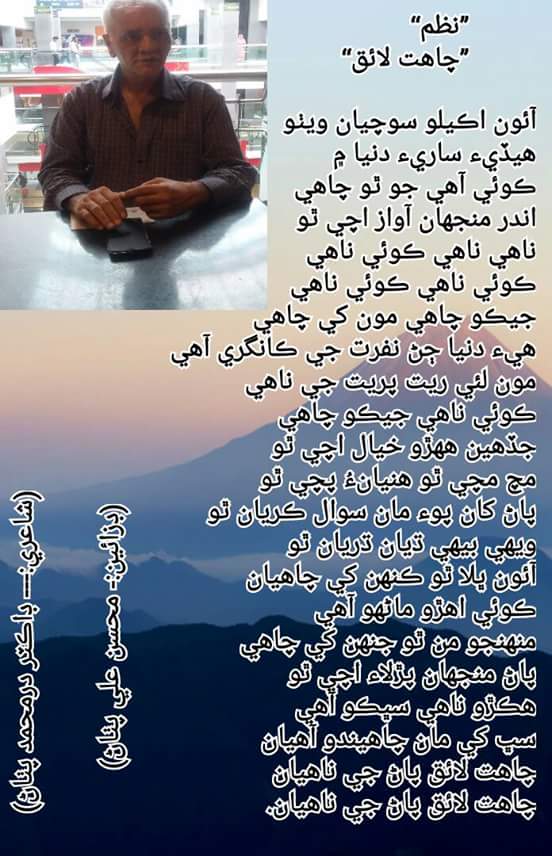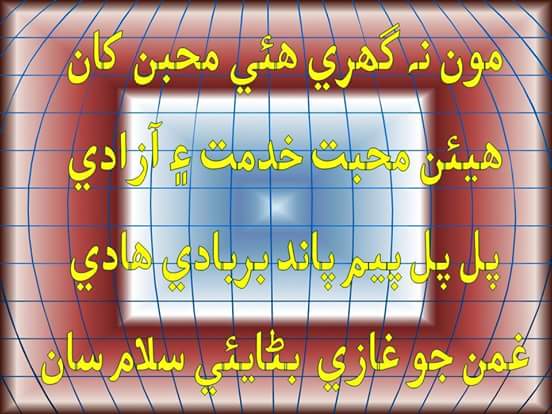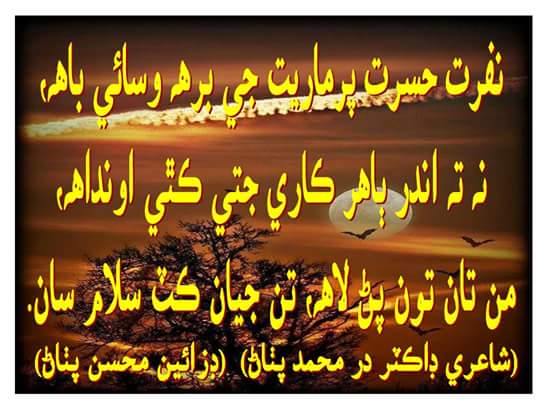|
PAKISTAN AND SOUTH ASIA
|
|
Address by |
|
Mohtarma Benazir Bhutto |
|
Prime Minister Islamic Republic of Pakistan |
|
AT |
|
FOREIGN POLICY ASSOCIATION |
|
Bonn |
|
19 April, 1994 |
|
The German Foreign Policy Association provides an opportunity to address a distinguished gathering of eminent experts to share my views on South Asia. |
|
This Association plays an important role in stimulating discussion and research on critical questions of international politics with a view to promoting peace and stability on a global level. Given Germany's vital role in promoting socio-economic development in nearly all South Asian countries including Pakistan-during the past four-and a half decades, I trust the Association will give sufficient attention to the challenges facing South Asia and the prospects awaiting realization. |
|
South Asia today stands at the cross-roads. It can either achieve peace and stability and prosperity and become a valuable partner in the establishment of a just and lasting world political and economic order. Or it may continue to be plagued by internal inadequacies and failures exacerbated by negative external factors and become a factor of instability for the international system. |
|
I draw your attention to the unique geo-political location Pakistan enjoys. It is simultaneously an integral part of South Asia as well as contiguous to the Western and Central Asian regions. Indeed our physical, historic and spiritual links with these two regions have served to enrich our history, civilization and culture. Pakistan has been the site of a fascinating blending of South Asian and Central Asian cultural values and institutions. That is why we do not see any incompatibility between our South Asian and our Central Asian credentials: Both regions are of fundamental importance for Pakistan. |
|
The South Asian region comprises Pakistan, India, Bangladesh, Nepal, Bhutan and the Islands of Sri Lanka and Maldives. Together these seven countries occupy a total area of over five million square kilometers and are home to over a billion people constituting nearly one fourth of the world population. The intrinsic geo-political significance of South Asia is enhanced by its proximity to East Asia, the Gulf and the Western and Central Asian regions. It is impossible to visualize, let alone erect, a structure of international peace and harmony in this part of the world if South Asia continues to suffer from internal difficulties and endemic inter-state conflicts. Peace and stability as well as economic development and prosperity in South Asia are therefore indispensable for international peace and stability. |
|
The South Asian region today presents a picture of bewildering contradictions. The situation is marked by a host of positive and negative features. The positive factors include the region's considerable natural resources which have been only partially exploited, its hard working peoples and development friendly cultural systems. Of the negative factors which cause worry, the most serious is the all-pervasive phenomenon of poverty. Nearly 30% of the population lives a precarious existence below the poverty line. The averageper capita income in the region is $ 250. All the seven countries of South Asia are described as "low-income countries" by the World Bank. The acute hardships caused by poverty are exacerbated by vast disparities manifested by the existence of small enclaves of prosperity amidst large areas of deprivation. Unabated growth in population negates the meager economic progress and adds to the spectrum of needs. The natural resources of the region are threatened with depletion because of insufficient conservation. There are multiple ethnic, religious and social conflicts. Above all, unresolved inter-state disputes perpetuate a climate of uncertainty, fear, tension and hostility. |
|
Although the overall situation is bleak, there are positive developments. All the South Asian countries, including Pakistan, ruled for decades by non-representative regimes, are now democratic polities. All have begun a process of political and economic liberalization. The rule of law, freedom of the press and democratization are now the hallmarks of South Asia. Inward-looking, state-dominated economic systems have been replaced by outward-looking, reformed and restructured systems. |
|
The negative features within the South Asian region are related to unfavorable external factors. These include a drastic reduction in foreign aid, reverse flow of resources, increasing protectionism and the emergency of regional economic blocs promoting their interests to the detriment of South Asian and other third world states. |
|
The advent of democracy will lead to accelerated socio-economic development in the South Asian countries with the successful implementation of the process of reform inaugurated by their democratic governments. But genuine participation of the people in their affairs has led to spirited discussions within the countries of the region on how to meet the economic challenges through national efforts and concerted actions in a regional framework. |
|
In many respects, South Asia is suited for cooperation in a regional context through institutional linkages. The physical parameters of South Asia are defined and shaped by the lofty Himalayas in the North, the Peninsula around the Indian Ocean and the Islands of Sri Lanka and Maldives. These physical features have created an economic and ecological zone. There are no insurmountable geo-graphical impediments obstructing the flow of ideas and values as well as commodities and products and services. Few other regions of the world have such a deep, natural ecological coherence resulting from interlinking mountain ranges, oceans and rivers. Geographical continuity inevitably facilitated historic and civilization interaction. The political, economic and cultural connections in the ancient and medieval eras were reinforced during the two hundred years of British colonialism which left behind a web of physical and intellectual communications such as railways, roads, post and telegraph and the English language. The unifying force of colonialism in South Asia is highlighted by the fact that five out of the seven member states of SAARC are also members of the Commonwealth. |
|
Physical contiguity and historical linkages have created what can be broadly described as a South Asian identity which provides a strong basis and rationale for peaceful and cooperative relations among the South Asian States as well as for multi-dimensional regional cooperation for the collective benefit of their peoples. |
|
Unfortunately, the urgings of a shared heritage of history and the logic of geography have been defied by the nature of inter-state relations. Relations have been largely conflictual rather than friendly. |
|
As a result, the historical, ethnic and religious factors which bind the peoples of the region together have failed to prevent mutual mistrust, perennial tensions and even armed hostilities. Significantly, all the inter-state disputes in South Asia are between India and the other countries. For decades, India's relations with countries of the region have been marked by unresolved territorial disputes, differences over distribution and apportionment of river waters and inequitable political and economic relations. Most of these problems have remained unresolved. India accounts for 75% of the population, 83% of the arable land, 98% of the coal production and 88% of the oil production of the entire region and has acquired a huge military machine in a bid to impose hegemony over its neighbors. It is regrettable that India has added to the difficulties faced by its smaller neighbors. |
|
It is remarkable that the conflict between India and Pakistan and the many disputes between India and the other South Asian countries did not deter the leaders of South Asia from advocating regional cooperation. They served to sustain and strengthen a widespread yearning at the popular level for friendly and cooperative relations. |
|
The establishment of the South Asian Association for Regional Cooperation (SAARC) in 1985 represented the translation of the concept of regional cooperation in South Asia into a reality. The founding fathers of SAARC were aware that unlike the other regional arrangements such as the European Economic Community and the Association of East Asian Nation (ASEAN) which were set up to consolidate existing cordial and friendly inter-state relations among their member states, SAARC had to operate in a political context bedeviled by endemic inter-state disputes and adversarial relations. Given these constraints, it was decided that SAARC would evolve cooperative patterns in non-political areas, enabling policy-makers, experts, and representatives of different groups to come together for mutually beneficial interaction. It was hoped that growing economic cooperation would eventually help in facilitating solutions of the interstate political disputes which would in turn encourage the member states to further deepen the economic ties. |
|
The record of SAARC during the past nine years offers important lessons. SAARC has a functioning secretariat. It has established technical committees covering almost the' whole gamut of activities such as Agriculture Industry, Education, Health, Population, Communications, Science and Technology, Sports, Arts and Culture and lately Environment. It has inspired the adoption of regional conventions on curbing terrorism. It has promoted cooperation in combating narcotics traffic and smuggling. A food security reserve has been created. Senior Officials, Ministes, and Heads of State and Government meet frequently to review progress achieved and approve projects for cooperation in future SAARC has motivated parliamentarians, lawyers and members of academic and research institutions and professional groups to set up cooperative linkages. |
|
However, the impressive institutional mechanisms and the feasible projects for cooperation in diverse fields have not led to a significant increase in the quantum of cooperation among the member states of SAARC. Most of the projects for collaboration have remained un-implemented. The non-implementation of schemes of fundamental importance such as the South Asian Preferential Trade Agreement (SAPTA) and the establishment of a South Asian Regional Fund and a Payments Union has led to growing frustration among our intellectuals and our people who had hoped that like other regions of the world, the South Asian States will establish a workable cooperation. |
|
The reason for the low rate of regional cooperation is the climate generated by unresolved inter-state disputes. It is abundantly clear that unless the SAARC member states take steps to resolve the outstanding issues through negotiations as stipulated in the UN Charter, peace and stability in the region as well as the prospects of regional cooperation will remain unrealized. |
|
Pakistan has been able to establish friendly and cooperative relations with all countries of South Asia except India. The non- resolution of the Jammu and Kashmir problem, the central issue in our relations, has served to perpetuate hostility. Since 1990 relations have further deteriorated with the repression meted out by Indian forces against the people of Jammu and Kashmir. The atrocities committed by Indian forces have not undermined the resolve of the Kashmiris to continue their struggle for the right of self-determination as promised by India, Pakistan and the world community. The dispute over Jammu and Kashmir casts a long shadow on regional cooperation. |
|
I would like to conclude by expressing my conviction that South Asia can overcome its internal difficulties and become a pillar of international peace and security if four essential pre-requisites are met. First, South Asian States must be able to consolidate their democratic structures. Secondly, they must summon the political will to amicably resolve all the inter-state problems. Thirdly, they must make concerted and sincere efforts to strengthen regional cooperation. Finally, the International Community must play a helpful role in enabling the South Asian States to resolve inter-state differences and to peacefully carry out the process of political, economic, and social transformation as well as to forge credible structures of regional cooperation. |



